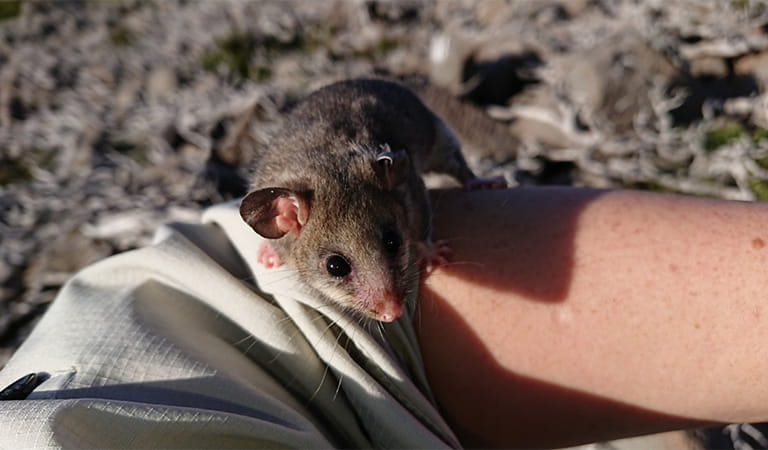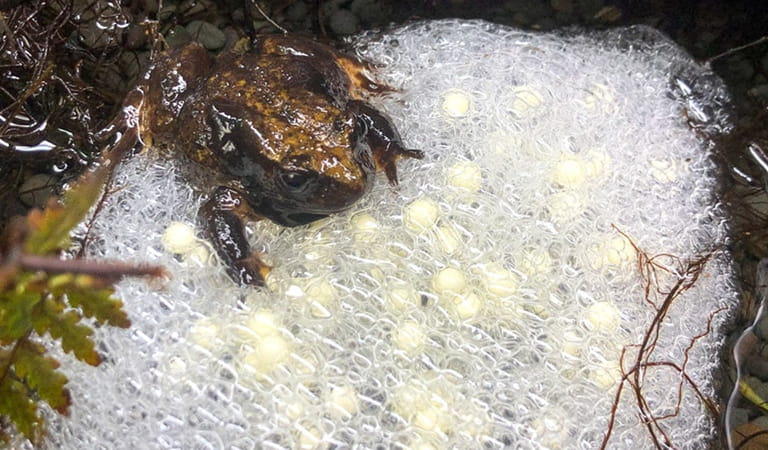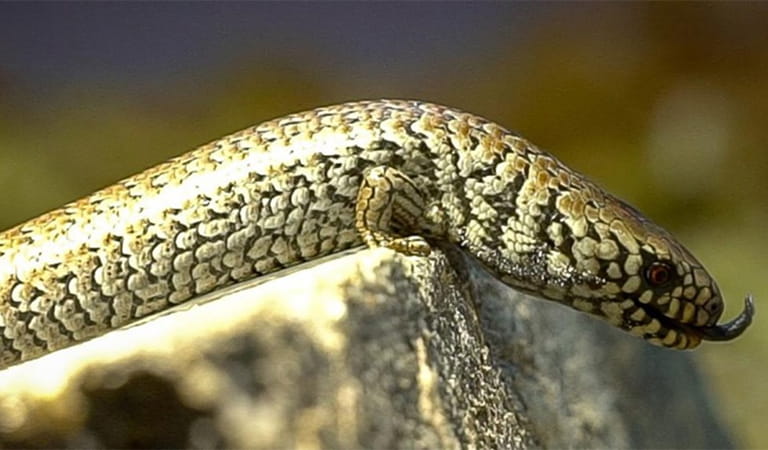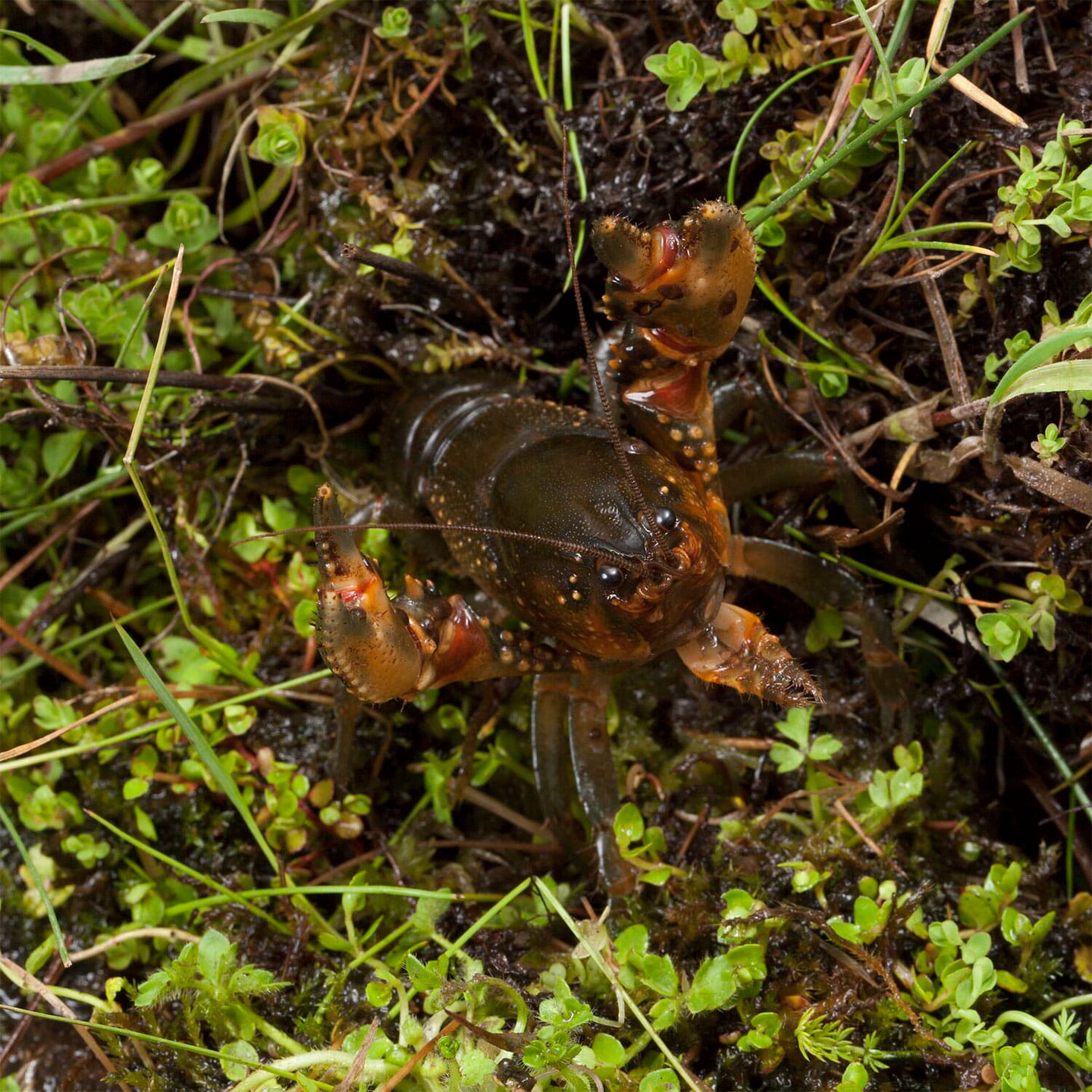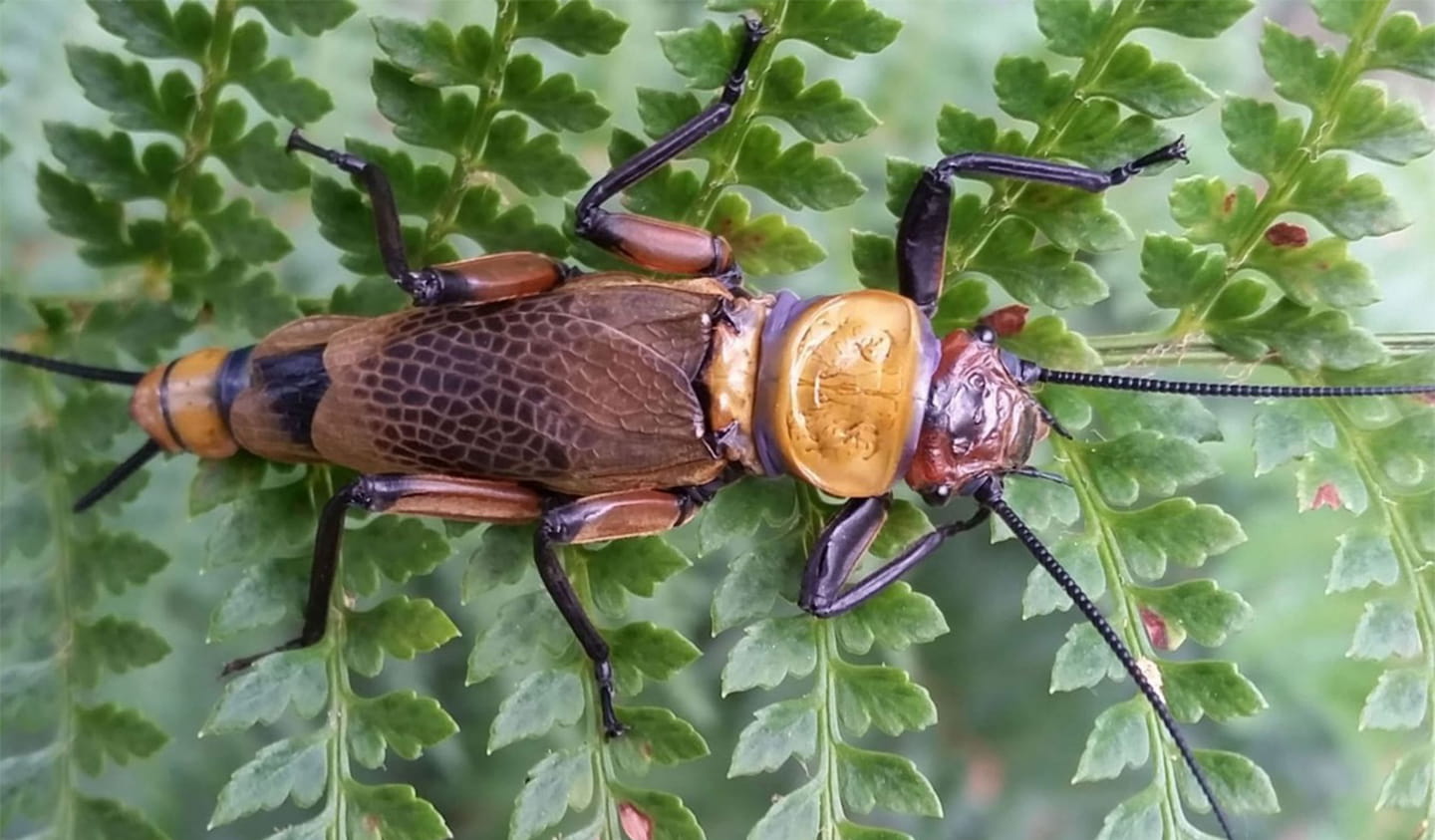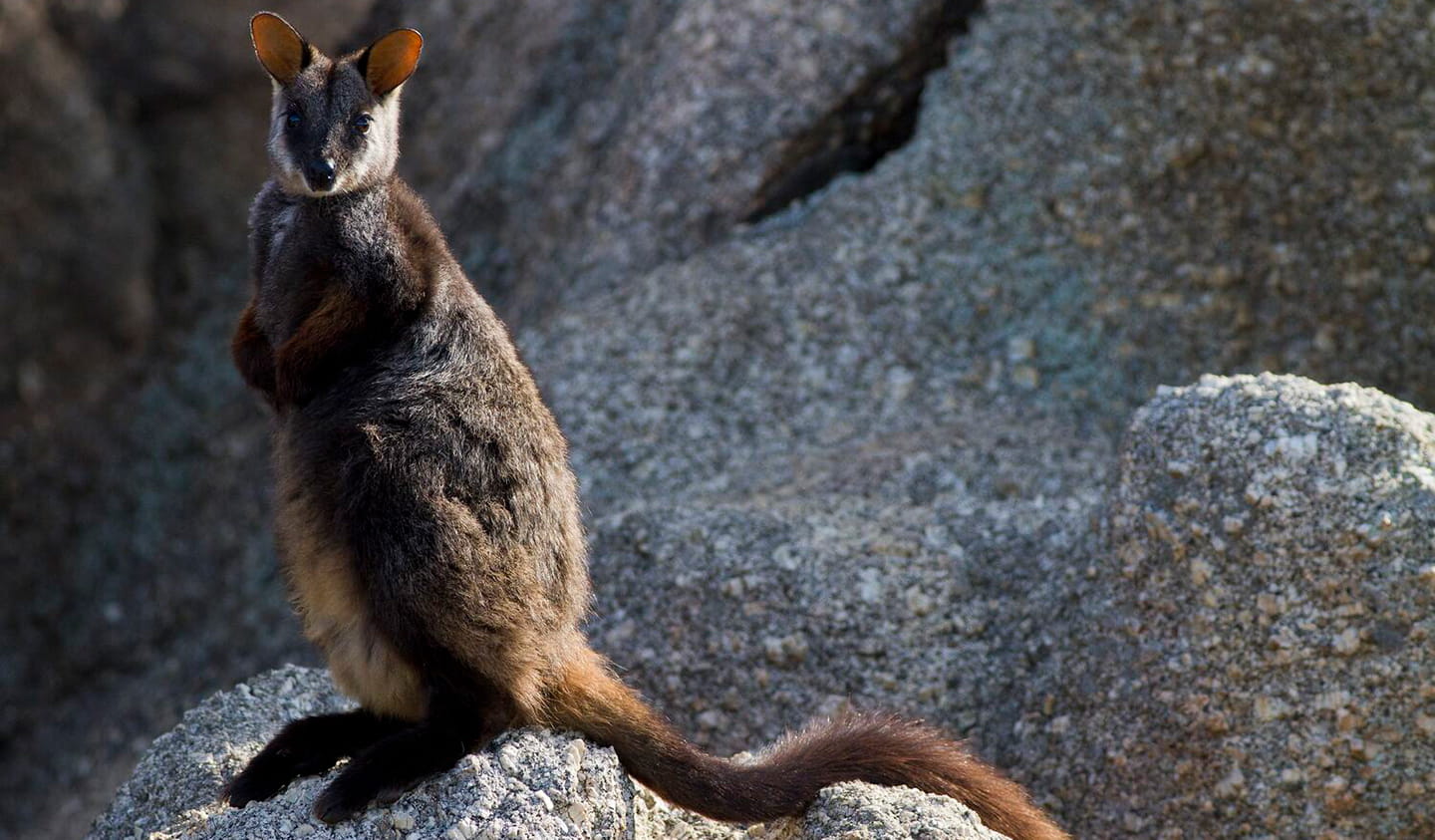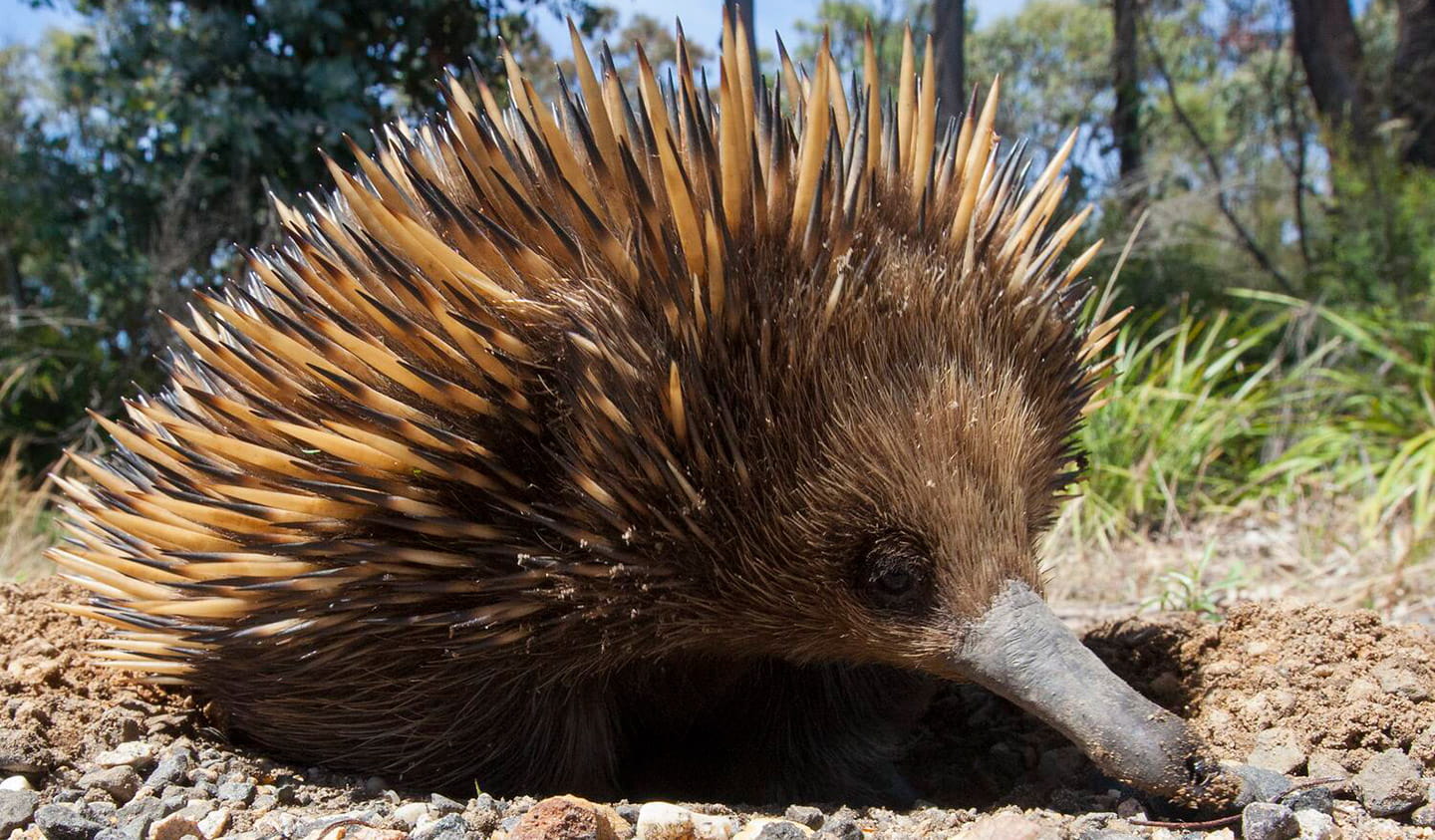Fauna
The animals that have evolved with this climate are incredibly unique; more than 300 native vertebrates (back-boned animals) have been recorded in this region.
This “bug-eyed” marsupial was first found in the fossil record, based on a jawbone and a few isolated teeth from 15,000-year-old cave deposits in NSW. Image credit: Parks Victoria
Mountain Pygmy Possum (Burramys parvus)
The Mountain Pygmy Possum is Australia’s only hibernating marsupial.It is restricted to alpine habitats over 1300 metres, and only 2000 individuals are thought to exist in the wild.
They engorge themselves on the fatty Bogong moths (Agrotis infusa) that arrive throughout Spring, whose number used to be in the billions, but have now been listed on the IUCN endangered list.
For more information on the Mountain Pygmy Possum, check out this article: "Back from the dead and back again? A Mountain Pygmy Possums tail".
The spawn has a unique quirk in their metamorphosis, in that they don’t eat! The pale white youngsters rely on the energy derived from their development to adulthood and the yolk from their egg. Image credit: Zoos Victoria
Baw Baw frog (Philoria frosti)
Hidden in the muddy bogs of the chilly Baw Baw plateau in Victoria’s central highlands, the Baw Baw frog is one of the most unusual amphibians in the world.It’s also one of the most endangered, with less than 1000 individuals remaining in the wild. Rather than swimming openly in streams like most frog species, Baw Baw frogs spend most of their lives underground, hiding in burrows within the soil.
During mating in spring and summer, female frogs lay their eggs in burrows where they form foamy masses of frogspawn.
Unfortunately for this endemic Victorian species, their populations were decimated by the spread of the chytrid fungus (Batrachochytrium dendrobatidis) that emerged throughout the 1980s.
There are numerous threats to their populations, and Parks Victoria monitors these alpine landscapes (specifically in endangered sphagnum bogs) along with Zoos Victoria, who have successfully bred the frog for the first time in captivity.
This lizard has a peculiar name, as She-oak trees (Allocasuarina sp.) are not found in the Victorian alpine regions. The first described species of She-oak skink was found in Bruny Island (Tasmania), where she-oaks are highly abundant. Image credit: Zoos Victoria
Alpine She-oak Skink (Cyclodomorphus praealtus)
At one of the highest points of the Australian continent, this endangered skink has highly reduced limbs on the side of its body. Its snake like appearance may help it to scare off predators, as the skink has been witnessed rearing up its head and flicking their long blue tongue like a venomous snake.The species lives in small ‘sky islands’, fragmented patches of grassland 1500m above sea level. It needs tree-less or very lightly treed areas, hiding from predators in thick grasses, ground debris or rocky crevices. Adults have small home ranges; the largest recorded distance between sightings of the same individual is just 45m. Only four known populations have been documented, each isolated by distances larger than the skink can travel.
Much like the Baw Baw frog, their populations have crashed due to a variety of threats, including the pressure of hoofed animals. Fire is another major cause, which not only kills individual skinks, but also burns the precious understory vegetation that protects them from predators. Climate change and invasive weeds are a significant threat, both reshaping the landscape and allowing other plants to overtake the grassy plains they need to survive. Parks Victoria manages their unique landscape by undertaking threat mitigation works, such as reducing off track vehicle usage by blocking illegal roadworks, to protect this species from extinction.
Like all yabbies, these crayfish can regenerate their limbs if they lose them to predators. Image credit: Museums Victoria
Alpine Spiny Crayfish (Euastacus crassus)
With in-built anti-freeze within its blood, the Alpine Spiny Crayfish is only found in the freezing cold streams throughout the Australian alps.This tough yabby is the definition of a survivalist; as with most freshwater crayfish species, the female will carry her eggs under her tail and guard the young after they hatch for months at a time.
The Alpine Spiny Crayfish is a slow-growing species and produces few offspring, making it particularly vulnerable to population declines caused by habitat destruction. One of the biggest threats to this species include are changes to their water regime that are primarily caused by feral hoofed animals such as deer and horses.
One of the biggest threats to these alpine stoneflies are climate change and a changing water regime. Image credit: La Trobe University
Alpine Stoneflies (Genus: Thaumatoperla, Species: T. alpina and T. flaveola)
You might not think of a stonefly as a top predator, but up in the alpine streams this is Australia’s absolute largest, with a total length slightly smaller than your thumb.These threatened predators live in their larval stages for at least two years underneath the cobble bed of babbling streams. Their distribution is not well studied, and this highly limits how we can manage their recovery.
La Trobe University has partnered with Parks Victoria and other agencies to identify key areas for their conservation, following the devastation of the 2019/2020 bushfire, and have previously utilised sniffer dogs to detect their odour.
The small population size of the wallaby means its genetic variability is limited, posing another significant threat to the survival of this one-of-a-kind creature. Image credit: Museums Victoria
Southern Brush-tailed Rock Wallaby (Petrogale penicillata)
The Southern Brush-tailed Rock Wallaby is one of Victoria’s most critically endangered mammals, with just two colonies across the state and fewer than 100 individuals remaining in the wild. With a long thick tail for balance and coarse foot pads for gripping, this wallaby is an expert climber, scaling rocky escarpments and bounding across steep granite outcrops without difficulty.Their rufous fur keeps the wallaby camouflaged amongst the rocky ridges they shelter in during the day. However, this marsupial is most active in the evening when they emerge from their craggy habitats to feed on native grasses, shrubs, seeds, fruit, and flowers.
The Southern Brush-Tailed Rock-Wallaby was once abundant in Victoria, but numbers have dwindled due to habitat loss driven by climate change and predation pressures from foxes and feral cats.
Critical conservation work to hybridize the wallaby with other known populations further north is being done in conjunction with Zoos Victoria. After the 2019-20 bushfires in east Gippsland, Parks Victoria worked in partnership with the Department of Energy, Environment and Climate Action, the Gunaikurnai Land and Waters Aboriginal Corporation, the Tidbinbilla Nature Reserve and Mount Rothwell Research Reserve to give this species a fighting chance for survival.
Echidnas do not have any teeth, and instead rely on their sticky tongue that can be more than 15 centimetres in length. Their scientific name “Tachyglossus” means “quick tongue”. Image credit: Mark Norman
Short beaked Echidnas (Tachyglossus aculeatus)
Short beaked Echidnas (Tachyglossus aculeatus) are arguably the most widespread native mammal on the continent.They can hibernate during winter for long durations in this region, reducing their ambient body temperature to a mere 5 degrees Celsius.


